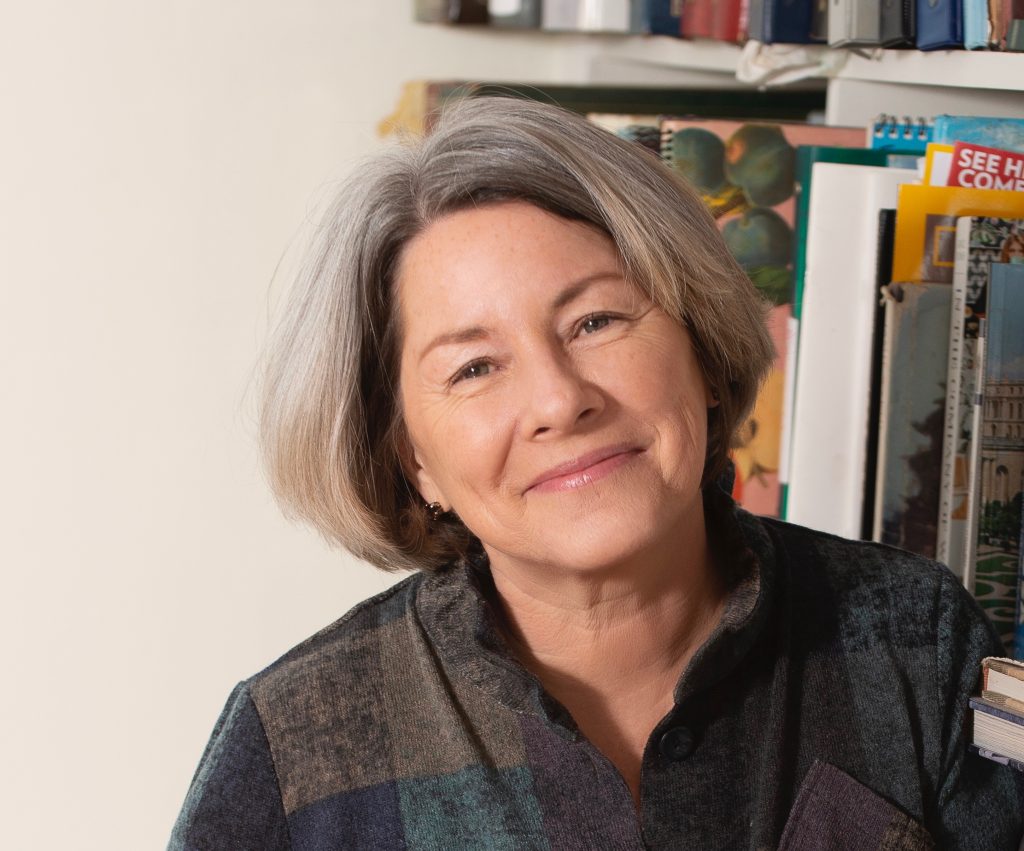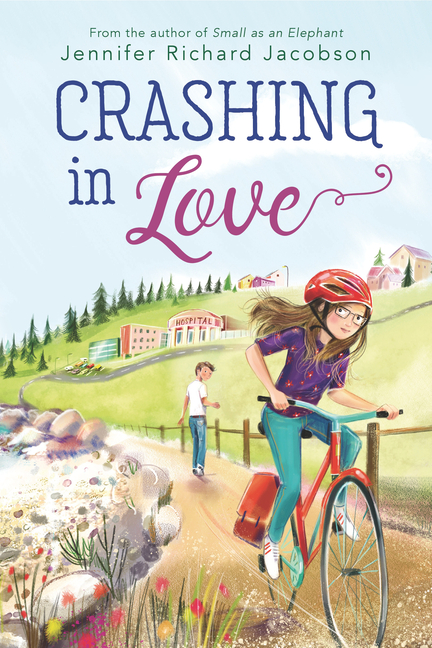From Teaching to Writing

TeachingBooks asks each author or illustrator to reflect on their journey from teaching to writing. Enjoy the following from Jennifer Richard Jacobson.
I’ve been both a teacher and a writer my entire adult life. I love the symbiotic nature of these two roles. Each whispers in the others’ ear: Come on now, you can do better than that.
Does that sound critical? Well, yes, it does. (It’s not by accident that my latest middle grade novel, CRASHING IN LOVE, is about a twelve-year-old perfectionist.) But this push to constantly do a better job of reaching both my writing students and my readers has caused me to think long and hard about ways of providing feedback—what helps and what doesn’t. Whether I’m working with young writers or coaching adults, I try hard to focus on three well-tested techniques: mirroring the work, pointing out the successes, and questioning.
Students can’t help smiling when they hear their teacher reflect their work.
Mirroring the work. This is a simple and often underestimated technique. When working with kids in the classroom, I ask them to read me their work (or a portion of it is long). I simply listen. Then I report what I heard without any embellishment. If I were mirroring the first pages of CRASHING IN LOVE, it would sound like this: “You wrote a story about a girl named Peyton who is racing down the street on her bicycle. She discovers a pile of clothes in the road, which turns out not to be a pile of clothes, but a boy her own age. He’s unconscious and she calls 911.” Notice that I haven’t passed any judgments. I haven’t used words like exciting or added to the story by saying something like, “she must have felt very brave.” I simply tell what I heard.
Many teachers feel they don’t have time for this technique and it’s an assumption I understand. Writer’s Workshop demands so much from us in a short period of time. Yet, once tried, they realize the transformative power of the exercise—particularly at the beginning of the year. Students can’t help smiling when they hear their teacher reflect their work. Wow! They think. They were really listening! (After all, we write to be heard.) It builds a lasting trust. Additionally, it helps build a sense of audience. Your students will write with the knowledge that if you can’t understand it, you can’t mirror it back well.
Point Out the Successes For writers, positive feedback is perhaps more productive, more supportive of growth, than constructive criticism. But it must be very precise feedback. Platitudes such as “Fun story” or “Well-done” don’t cut it. Every teacher of young children knows that if you tell a writer who wrote about cows that his story was fun, you will get six more stories about cows. Instead, you point out the specific examples of fine writing so that the writer may repeat her success no matter what topic she’s writing about. (And each time you comment on a sensory detail or the successful use of pacing you are reinforcing the qualities that make fine writing.)
Writers never, ever grow out of this need. I am, as Anne Lamott says, in the third-third of my life. I have published over twenty books for children, and yet my heart still danced each and every time my critique partners marked strong voice in CRASHING. It was their gushing that kept me going through the hard, sticky parts—that made me believe in my story enough to keep showing up every day. It’s not that we writers are such an insecure lot (though it does feel that way sometimes) it’s that we’re constantly taking new risks. It helps to know when our risks have paid off. You know what they say: success begets success.
Questions force the reader to think harder about their work and to make important choices.
Questioning It’s easy to imagine that the best use of our teaching time is to point out problems in a story and suggest ways to fix it. (Peyton and I not only share the character trait of perfectionism, we’re also “fixers.” Nothing makes us happier than being “useful” to others.) But when we jump to solutions, we rob the writer of developing independence and agency. Even more importantly, we frequently misunderstand the intentions of the writer. We send them down a path of not trusting their own instincts—the very intuition that called them to this particular story in the first place.
Fortunately, professional editors are masters of questioning. After submitting an early draft of CRASHING IN LOVE, my editor, Kaylan Adair, asked lots of questions: How do Peyton and her sisters feel about the divorce? (Each sister may feel quite differently, given their differences in age and personality, or they may be unified in their feelings.) How does each assign blame? How does that change each girl’s relationship with whichever parent she feels is primarily responsible for the split? In other words, she pinpointed the areas I needed to go deeper. (Places this previously divorced mother of two was wholeheartedly avoiding.) Questions force the reader to think harder about their work and to make important choices. And that, ultimately, is what fine writing is all about: a choice, followed by another choice, followed by another.
I believe everyone has a story (or two or three or twenty) to tell. And by taking the time to listen, to praise, and to question we can help writers recognize the power of their own thoughts, to trust their own voice. When it comes to writing, we can help them crash into love.
Books and Resources

TeachingBooks personalizes connections to books and authors. Enjoy the following on Jennifer Richard Jacobson and the books she’s created.
Listen to Jennifer Richard Jacobson talking with TeachingBooks about the backstory for writing Crashing in Love. You can click the player below or experience the recording on TeachingBooks, where you can read along as you listen, and also translate the text to another language.
- Listen to Jennifer Richard Jacobson talk about her name
- Explore an author interview about Crashing in Love
- Discover Jennifer Richard Jacobson’s page and books on TeachingBooks
- Visit Jennifer Richard Jacobson on her website, Facebook, and Instagram.
Explore all of the For Teachers, By Teachers blog posts.
Special thanks to Jennifer Richard Jacobson and Candlewick for their support of this post. All text and images are courtesy of Jennifer Richard Jacobson and Candlewick, and may not be used without expressed written consent.



Leave a Reply